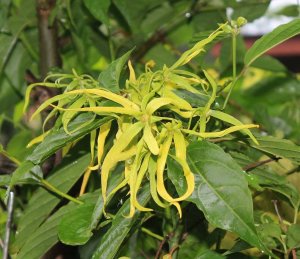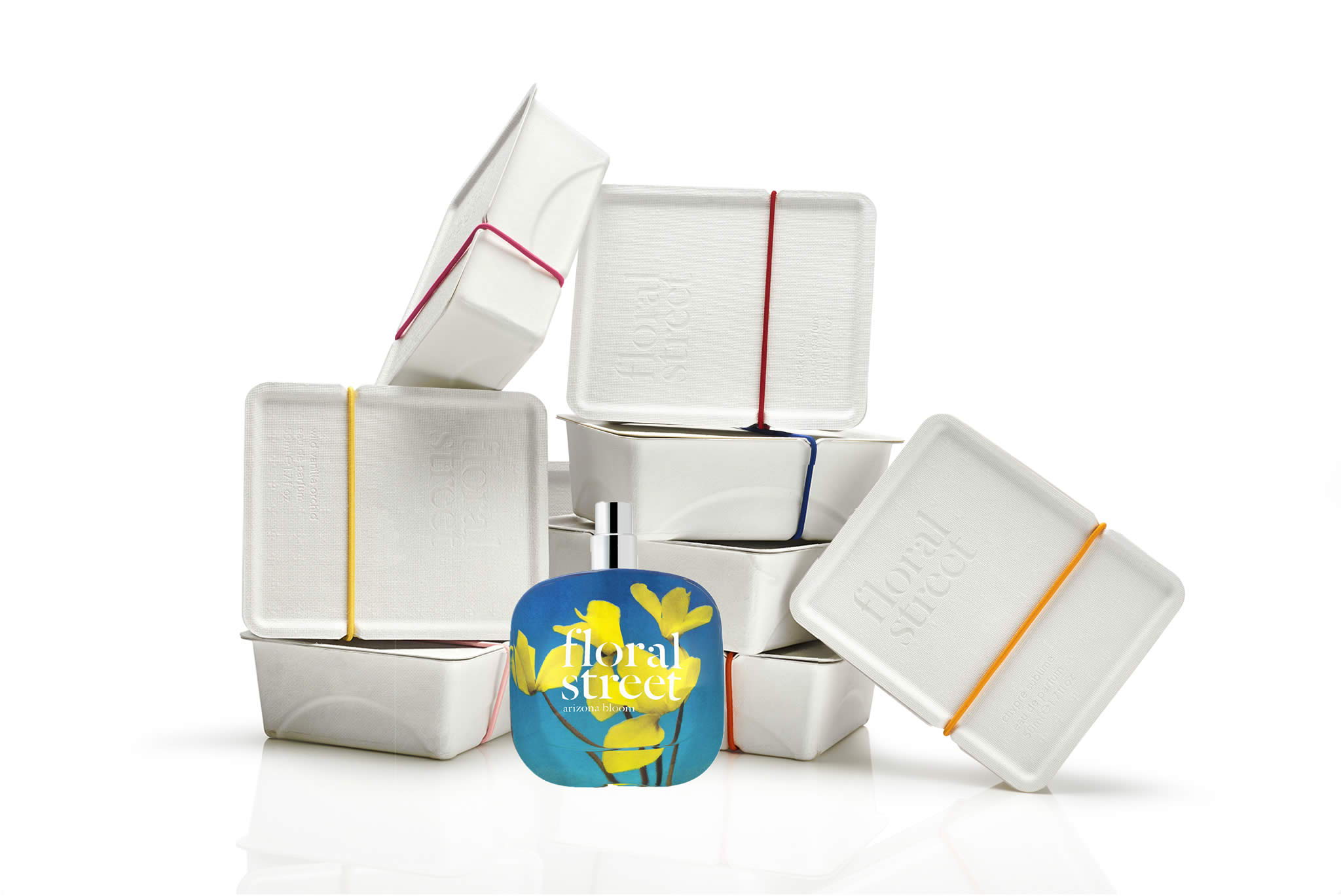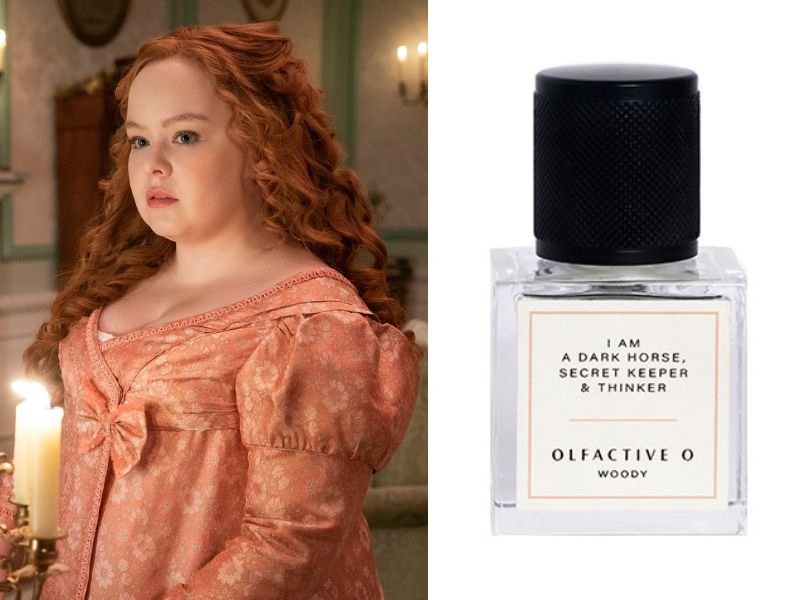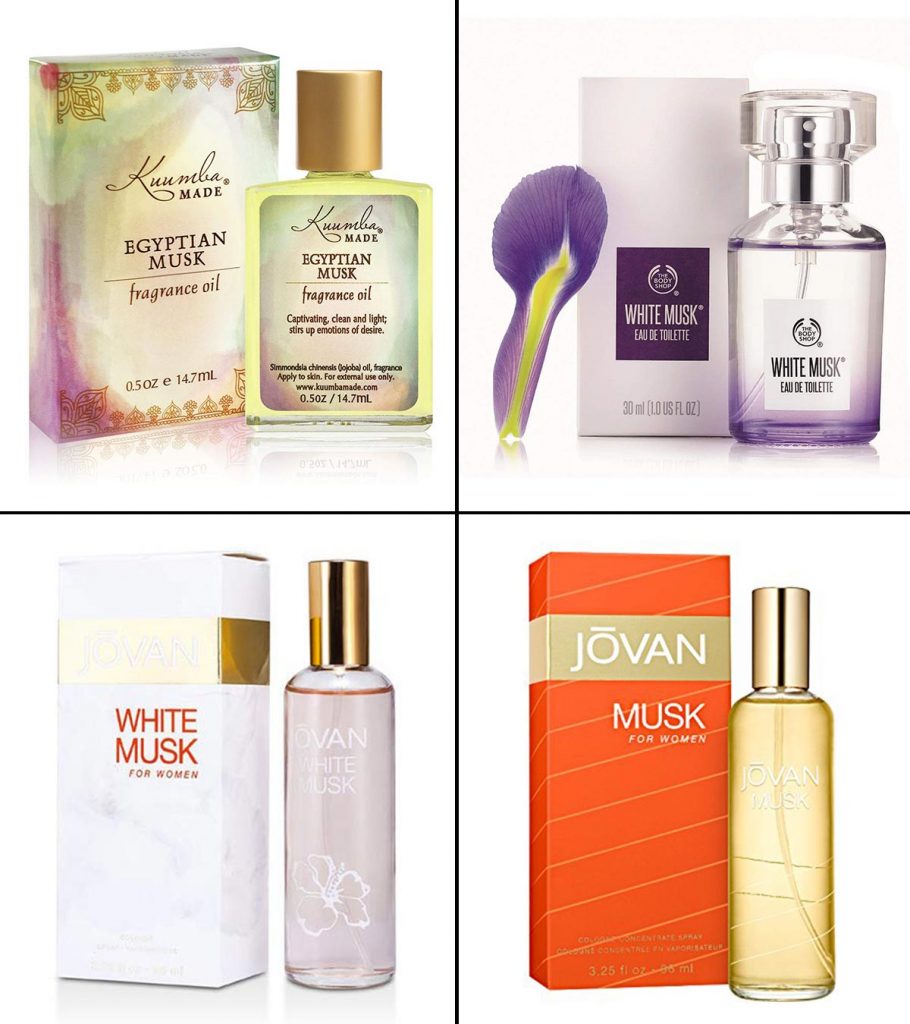Ylang Ylang is a star-shaped, yellow flower with large, curved petals that is indigenous to the rain forests of many Asian nations, Polynesia, and Madagascar.
The name, ylang ylang, derives from the Tagalog word, ilang, which translates to “wilderness.” Some suggest this is a reference to the manner in which the flowers dangle and dance into the heart of the wind.

Blooms are clustered in groups of 4 to 12 on the branches of the fragrant, tropical Cananga tree, which may reach a height of 40 meters (131 feet). Each bloom features two sets of three petals, which are initially green and then become yellow as they grow.
The monicker “Queen of Perfumes” that has been given to this essential oil is well-deserved because its exotic, deep, and rich scent has been used for centuries for both therapeutic purposes and as an ingredient in some of the most famous perfumes in the world, including Chanel #5. Here, it acts as a crucial aldehyde that bridges the gap between the aldehydic head notes and the floral heart notes of dreamy, musky rose and intense, haunting jasmine.

Ylang ylang is a preferred component in today’s perfume scene and can be found in the formulas of many of the top perfumers around the globe.
About the origins of this magnificent, fragrant flower, not much is known. Some botanists believe that the ancient Polynesian civilization disseminated the use of this flower during the early stages of its colonization.
Some people think that the flower rose to popularity at the height of European colonization.
It is a fact that in the latter years of the 18th century, the French were the ones who first introduced the commercial cultivation of ylang ylang to the islands in the Indian Ocean.
What Does Ylang Ylang Smell Like?
The unique and powerful fragrance of ylang ylang is dreamy and romantic, featuring floral notes nuanced with aspects of creamy, balsamic, and powdery custard, intoxicating jasmine, sweet, slightly pungent banana, light and bitter neroli; and sensual, sugary honey.

Additionally, it combines well with other elements and has a verdant richness that is unmatched by any other fragrance component in the world. Chemical elements contribute to defining its unique characteristics.
The most noticeable is linalool, a natural alcohol with vibrant, floral undertones.
Although ylang ylang is most frequently found in feminine products and perfumes, it can occasionally be found in scents that are more masculine thanks to notes like creamy sandalwood and green, musty, and balsamic vetiver.
Where Does Ylang Ylang Come From?
The essential oil is extracted from its priceless flower source using the steam distillation technique. This process vaporizes carefully gathered and compacted volatile substances.
The many varieties of ylang ylang are graded, and the extraction intensity varies according to the intended purpose. For instance, perfume needs a stronger concentration than cosmetics.
Extra is the most potent and costly kind of this essential oil extract, and it has the largest concentration of organic, naturally occurring substances including linalool, geranyl acetate, and benzyl acetate.

Because of its delicate, rich, and sophisticated aroma, this type is most frequently discovered in distinguishing perfumes. The power of the “First,” “Second,” and “Third” versions varies, with the “Third” being the least potent.
The essential oil known as “Complete,” which is a culmination of all four stages of distillation, is produced after ten to twenty hours of continuous distillation. It contains the highest concentrations of redolent components like betacaryophyllene (BCP) and germacrene, both of which give any ylang ylang-based Alpha Aromatics fragrance deep, floral, and fruity tones.
Benefits of Ylang Ylang
Since time immemorial, this recognizable scent has been utilized in aromatherapy to treat the symptoms of tension and anxiety. Its calming nature is supposed to encourage a good outlook and lessen aggression.
It is a potent aphrodisiac and is also frequently used to enhance memory and cognitive abilities. These flowers are frequently scattered on newlywed couples’ beds in Indonesian culture.
52 individuals in a 2013 Korean research found that ylang ylang was effective at lowering blood pressure. Additionally, certain skin care products utilize it since it is believed to regulate sebum output (the fatty lubricant matter secreted by sebaceous glands of the skin).
A Few Of Our Recent Compositions Featuring Ylang Ylang
That’s not to say that the smell of ylang ylang is overpowering — it blends extremely well with a variety of other fragrance notes. In fact, ylang ylang is used in the highly-sought-after Chanel No. 5 perfume. Other renowned perfumes that use ylang ylang include:
- L’air du Temps by Nina Ricci
- Givenchy Amarige
- Dior J’Adore
- Estee Lauder Aerin Beauty Tuberose
- Tom Ford Jasmin Rouge
- Lanvin Arpège – launched 1924
- Gucci Bloom Profumo Di Fiori Eau de Parfum
- Gorgeous! By Michael Kors

In conclusion
Within the perfume industry, ylang ylang’s exotic aroma is often used. Women have been enchanted by its sweet, dreamy cloud of exotic aroma for generations, drawn to its rich, creamy, and romantic characteristics.
Its future appears promising, and if your business is looking to add that special touch to your feminine products or services, get in touch with our perfumers and ask them to create something special and individually tailored.
Photo Credits: Pixabay, iStock and Jonas Neilson
Source: Alpha Aromatics





